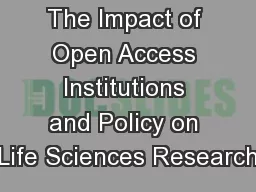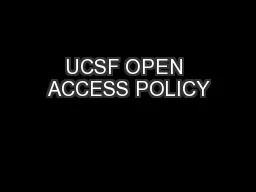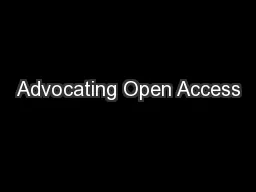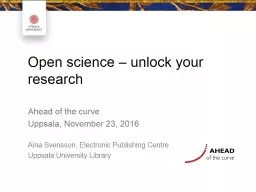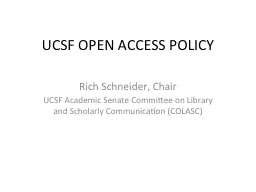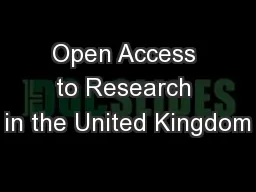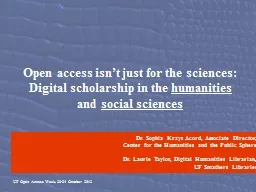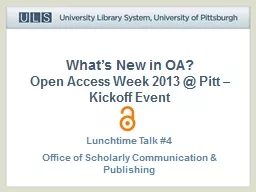PPT-The Impact of Open Access Institutions and Policy on Life Sciences Research
Author : lois-ondreau | Published Date : 2018-11-10
Scott Stern MIT amp NBER SciSIP Principal Investigators Conference September 2012 1 Do Open Access Institutions Matter YES In conjunction with coauthors in economics
Presentation Embed Code
Download Presentation
Download Presentation The PPT/PDF document "The Impact of Open Access Institutions a..." is the property of its rightful owner. Permission is granted to download and print the materials on this website for personal, non-commercial use only, and to display it on your personal computer provided you do not modify the materials and that you retain all copyright notices contained in the materials. By downloading content from our website, you accept the terms of this agreement.
The Impact of Open Access Institutions and Policy on Life Sciences Research: Transcript
Download Rules Of Document
"The Impact of Open Access Institutions and Policy on Life Sciences Research"The content belongs to its owner. You may download and print it for personal use, without modification, and keep all copyright notices. By downloading, you agree to these terms.
Related Documents

